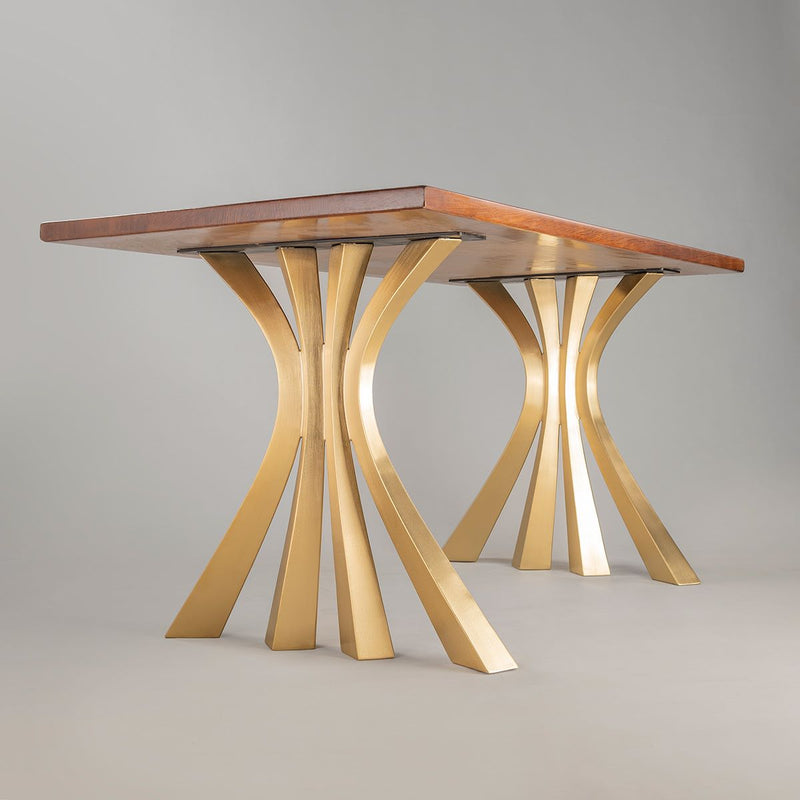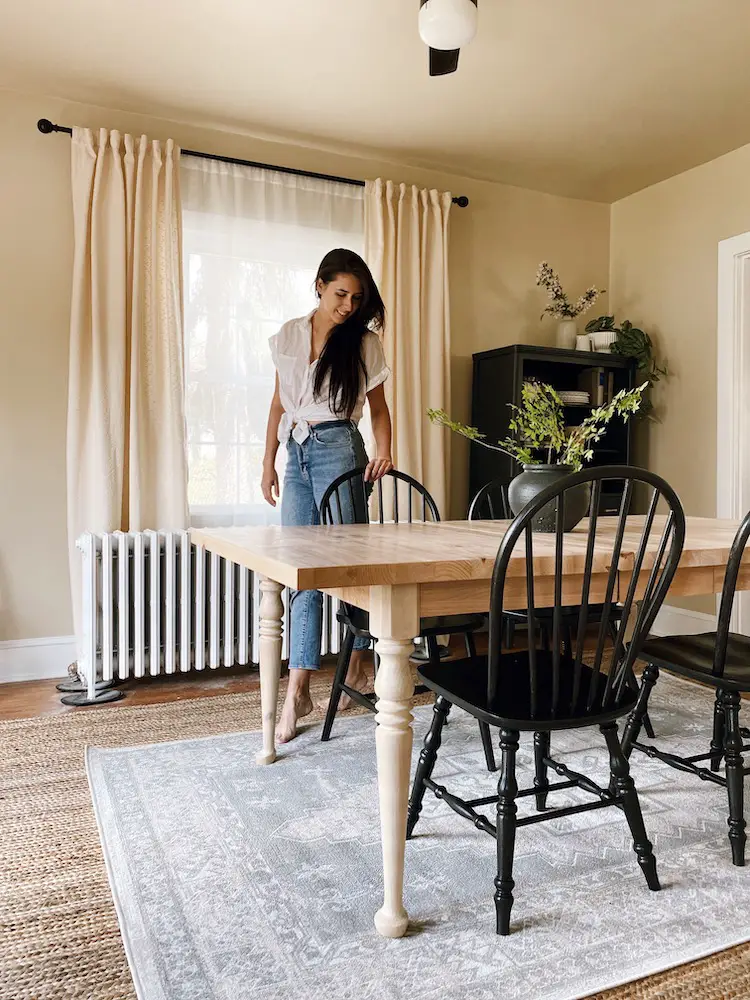The Ultimate Guide to Choose Resilient Dining Room Table Legs
The Ultimate Guide to Choose Resilient Dining Room Table Legs
Blog Article
Choosing the Perfect Eating Table: What Styles Job Best for Your Home?
Selecting the perfect table for your home can be a nuanced procedure that stabilizes aesthetic appeals and functionality. Whether your room leans towards standard style, modern minimalism, rustic beauty, or commercial stylish, the selection of designs offered can accommodate diverse tastes. Each style provides special benefits and challenges that can either improve or disrupt your eating location's consistency. Recognizing just how different materials, forms, and dimensions engage with your existing design is crucial. To browse these selections efficiently and find a table that genuinely matches your home, think about the complying with facets in information.
Assessing Your Area
Examining the measurements and layout of your dining area is a vital very first step in selecting the excellent table. Begin by gauging the length and width of the area, representing doorways, home windows, and various other architectural features that could influence table placement. This ensures that your table not only fits yet likewise permits comfy motion around it.
Consider the variety of individuals you usually entertain. A table should fit your household's daily needs while using adequate flexibility for periodic visitors. As a policy of thumb, allot at the very least 24 inches of table size per person to guarantee a comfortable dining experience.
It's also vital to keep appropriate clearance around the table. Preferably, there need to go to least 36 inches in between the table edge and walls or various other furniture, enabling very easy access and motion. For spaces where chairs with arms or added storage space units like buffets are entailed, increasing this clearance to 48 inches is recommended.
Lights and atmosphere play substantial functions as well. Guarantee that your table lines up with existing lighting fixtures or prepare for appropriate illumination services. This extensive spatial assessment warranties that your eating table not just fits physically however additionally harmonizes with your area's overall performance and visual.
Popular Table Styles

Typical table typically feature ornate details, bent legs, and abundant wood finishes, stimulating a feeling of ageless sophistication. They are best for homes with classic decoration or those aiming to include a touch of elegance to their dining location.
Modern dining tables prioritize simplicity and clean lines, typically including materials like glass and metal. These tables are excellent for contemporary areas, giving a smooth and minimalist appearance that complements minimal style ideologies.
Rustic eating tables, on the various other hand, emphasize natural materials and a handmade look - dining room table legs. They usually include recovered wood and a distressed surface, producing a warm and welcoming atmosphere. These tables function well in farmhouse-style homes or those looking for a relaxing, organic feeling
Industrial eating tables combine resources such as steel and wood, typically showcasing a practical visual. This design is fit for lofts or city areas, including a touch of tough beauty and resilience to the eating experience.
Each design uses unique advantages, making it vital to choose one that lines up with your home's general design go and your individual preferences.
Product Selections
When selecting a table, the option of material plays an important role in figuring out both the table's appearances and functionality. Timber, steel, glass, and composite materials each deal special advantages and challenges, making it important to straighten the product with your home's design and way of living demands.
Timber is a classic and flexible choice, offered in selections such as oak, walnut, and mahogany. Understood for its sturdiness and warmth, wood complements both traditional and modern interiors. It needs routine maintenance to avoid scratches and bending.
Steel tables, frequently crafted from stainless steel, aluminum, or wrought iron, are applauded for their contemporary appeal and Extra resources effectiveness. They are particularly fit for commercial or minimalist setups however can be prone to damages and might feel cool to the touch.
Glass dining tables bring an air of beauty and openness, suitable for smaller rooms as they create an impression of more space. While very easy to tidy, glass can be susceptible to spots and needs careful managing to stay clear of chips and cracks.
Composite products, such as MDF and plywood, offer cost-effective and personalized options, though they may lack the long life of natural products. Choosing the right product ensures your table is both a practical possession and an aesthetic joy.
Sizes And Shape Factors To Consider
After determining the appropriate material for your eating table, the next factor to consider is selecting the appropriate shape and size to match your area. On the other hand, round tables cultivate a sense of affection and are excellent for smaller eating locations, urging discussion by eliminating corners and making everybody feel equally included.
As a guideline of thumb, allot at least 24 inches of table size per person to make certain comfy dining. Furthermore, consider useful source the table's clearance area: there must be at the very least 36 inches between the table side and the wall surfaces or various other furnishings. Expanding tables use flexibility if you regularly organize bigger celebrations, offering additional seats when needed without occupying additional area daily.
Matching Your Style
Choosing a table that integrates with your existing decoration is pivotal in producing a cohesive and inviting room. Begin by assessing your current interior decoration style, whether it be contemporary, traditional, rustic, or diverse. The eating table must complement the general aesthetic, not take on it. A smooth, minimalist table with tidy lines is excellent for a contemporary home, while a vintage, elaborate table matches a more typical setting.
If your design features cozy tones and all-natural materials, take into consideration a wood table to improve the natural feel. Conversely, a glass or steel table might be extra appropriate in a room controlled by trendy shades and commercial aspects.
A rough-hewn, recovered timber table can add character to a rustic space, while a sleek marble surface can elevate an elegant eating location. A well-matched dining table not only boosts visual charm however also enhances the total eating experience.

Final Thought
Picking the suitable eating table demands cautious factor to consider of space, design, materials, form, and dimension (dining room table legs). Conventional tables complement timeless interiors with abundant wood surfaces, while modern-day tables match contemporary setups via glass and metal. Rustic layouts introduce warmth through natural materials, and industrial styles boost city environments with raw elements. Integrating the table with existing decoration ensures both performance and aesthetic allure, adding to a natural and visually pleasing dining location.
Report this page